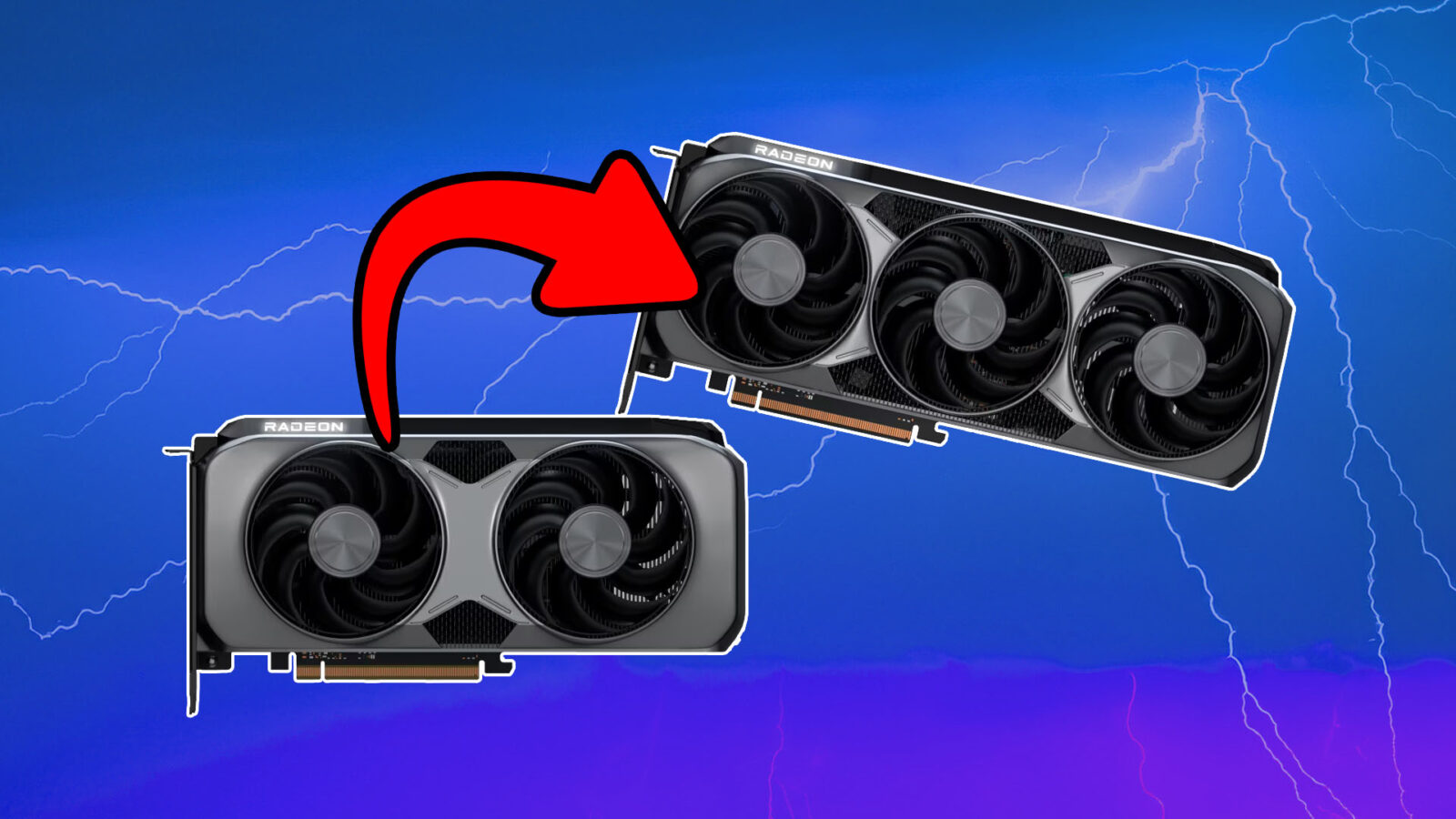Trust PC gamers to explore every possible chance for a free performance upgrade. The latest intrepid tech tinkerer has found a way to provide a significant boost to the overall performance of the AMD Radeon RX 9070 by upgrading its clock speed and TGP to RX 9070 XT levels.
This AMD upgrade can’t magically enable the disabled cores of the RX 9070, which would effectively make it identical to the RX 9070 XT – the best graphics card for most gamers right now. However, the extra breathing room to boost the GPU’s overall speed can still provide a noticeable boost in performance.
The BIOS bashing revelation comes from the forum of German PC gaming enthusiast site, pcgameshardware.de, where forum member, Gurdi, posted screenshots that revealed the firmware update and its affects.
Their initial post just revealed the changes in clock speed by showing screenshots of the GPU-checking software, GPU-Z, alongside AMD’s driver software. The former revealed the RX 9070’s clock speeds to be far higher than usual while the latter seemingly confirmed this was indeed an RX 9070 running at these speeds.

Gurdi then followed up their initial post with screenshots of 3DMark test runs that reveal the card is delivering world record-beating scores for this class of card. For instance, in the Port Royal test, Gurdi’s RX 9070 scored 19,014 points while the top recorded run on 3DMark’s own site for an RX 9070 is 18,818.
As to what those changes in clock speed and power are, the RX 9070 normally has a top clock speed of 2.52GHz with a thermal graphics power (TGP) limit of 220W – that’s why the lower-spec card consumed so much less power in our RX 9070 review. However, by applying the RX 9070 XT BIOS, the card was able to run at up to 3.1GHz with a TGP of 317W.

Crucially, this BIOS update was performed on an Asus Prime Radeon RX 9070, which is an overclocked version of the card. As a result, it actually delivers performance that’s higher than a stock clock speed RX 9070 XT. A stock speed card has a clock speed limit of 2.97GHz.
Gurdi hasn’t posted any details about the real world power consumption of the BIOS-flashed card but the screenshots do show that the card is set to a 317W TGP limit, so we’d expect its new power consumption to be in line with the notably high numbers we observed in our RX 9070 XT review.

As to how you the BIOS update was done, the BIOS was simply downloaded from the site, TechPowerUp, and applied to the card via a normal GPU BIOS update procedure. With the two cards both being Asus Prime variants, the BIOS seemingly worked with all the other features of the card without issue.
Before you go rushing out to buy an AMD Radeon RX 9070 and trying to flash its BIOS, though, be aware that such an upgrade is far from guaranteed and won’t be supported by the warranties of AMD or its card partners. It’s also impossible to know at this stage what the long term stability and performance of such a change might be. Still, if you’re feeling adventurous and want to save the $100 difference between the two cards, the option might be there, depending on the card you choose.
For a more reliable and downright recommendable BIOS upgrade, you should be sure to check that your motherboard BIOS is up to date. Even the best gaming motherboards can benefit from regular updates to the latest stable BIOS release, and you can learn how to perform a BIOS update by following our guide.
You can also follow us on Google News for daily PC games news, reviews, and guides. We’ve also got a vibrant community Discord server, where you can chat about this story with members of the team and fellow readers.












Leave a Reply